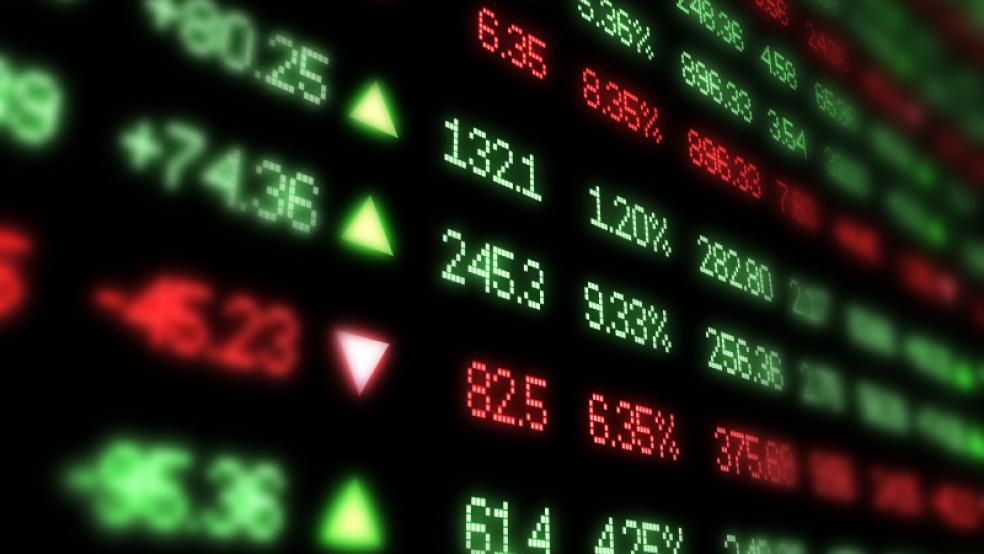A combination of solid earnings (especially in tech) — as well as a fresh interest rate cut by the People’s Bank of China and hints of more cheap money stimulus from the European Central Bank — have reignited animal spirits in a big way.
As a result, the Nasdaq Composite Index has powered back above 5,000, the Dow Jones Industrial Average is nearing 17,600 and the S&P 500 is hovering around 2,070, a level last seen before the market tumbled in August.
Despite dour expectations of the first back-to-back drop in quarterly earnings since 2009, a better-than-expected Q3 reporting season is now setting the stage for a powerful end-of-year "Santa Claus" rally that could see large-cap stocks challenge their record highs from July.
Related: Can Consumers Keep the U.S. Economy Going?
Of course, the futures market suggests worries about a possible Federal Reserve interest rate hike will resurface in early 2016; but for now, things are looking up.

Adding to the surprise is October's nasty reputation: It's the month remembered for the Panic of 1907, the Crash of 1929, the Black Monday crash of 1987, the 1997 Asian crisis mini-crash and the 2007 start of the last bear market.
The rally also defies recent investor pessimism: According to NYSE data, short interest rose in September to levels not seen since the financial crisis. Jason Goepfert at SentimenTrader notes that small traders (dubbed "dumb money" because they tend to get their market timing wrong) continue to bet heavily against stocks, based on options market activity, on a level not seen since 2008.
Related: Why We Might Be Headed for a Recession in 2016
While there have been some notable earnings misses, including American Express (AXP) and Yahoo! (YHOO), the third-quarter earnings season has been surprisingly good: According to FactSet, of the 58 S&P 500 companies that have reported results through last week, 81 percent have reported better-than-expected earnings while 50 percent have reported better-than-expected revenues.
Just take look at what went down on Thursday:
Texas Instruments (TXN) gained 11.9 percent on a beat and raise. eBay (EBAY) was helped by low expectations, rising 13.9 percent. McDonald's (MCD) gained 8.1 percent on a big Q3 earnings-per-share beat thanks to better revenues and profit margins. Comp-store sales exceeded expectations in all regions. Results and guidance weren't as bad as feared at Caterpillar (CAT), lifting shares 1.7 percent. And better margins, a strategic update and corporate actions helped Dow Chemical (DOW) gain 5.1 percent.
Then, after the close, the tech sector went wild: Amazon (AMZN), Alphabet (GOOGL) and Microsoft (MSFT) all report top- and bottom-line beats, setting up Friday’s powerful gain. Shares of these three were up 7 percent, 8 percent, and 10 percent respectively by midmorning.
Three things have contributed to the earnings surprises. The first is a stabilization of the U.S. dollar after surging into a high set in March. That has relieved some of the pressure on the valuation of foreign earnings. The second is the stabilization of commodity prices, with crude oil holding near the $46-a-barrel level reached back in January.
And finally, the aggressive debt-funded corporate share buybacks of the past few years — enabled by the Fed's 0 percent interest rate policy — are paying dividends by juicing earnings-per-share despite soft revenue growth.
Related: Don’t Be Fooled by Ferrari — the IPO Market Is Spinning Its Wheels
Ed Yardeni of Yardeni Research used United Technologies (UTX) in a recent note to clients to illustrate this dynamic. UTX reported that sales dropped 6 percent to $13.8 billion, driven by a 5 percent drop related to currency effects. Yet earnings per share fell only 2 percent to $1.67 a share. The kicker was the $1 billion in shares the company purchased in the quarter, reducing the outstanding diluted share count by 2 percent over the past year.
The party is set to continue: UTX announced plans to buy an additional $12 billion worth of its stock through 2017, funded partially by the proceeds from the sale of its Sikorsky helicopter unit.
According to Standard & Poor's data, overall S&P 500 earnings per share got a 3 percent boost from buybacks over the past year. LPL Financial analysts believe that as long as corporate ex-energy profit margins remain strong thanks to cost controls and limited wage pressure, all of this can continue for at least the next several quarters.
The wildcard, as I've explored in recent articles, is whether higher interest rates and growing credit issues in the bond market could slam the brakes on debt-fueled buybacks.
The worst-case scenario, one where corporate earnings would be hit hard, looks like this: A surge of inflation, driven by labor market tightness and wage gains, forces the Fed to aggressively tighten policy.
Currently, the futures market is only pricing in two 0.25 percentage point interest rate hikes through next November. This may be too dovish. But it's a concern for early 2016; for now, the rally is on.
Anthony Mirhaydari is founder of the Edge and Edge Pro investment advisory newsletters. A two-week and four-week free trial offer has been extended to Fiscal Times readers.






